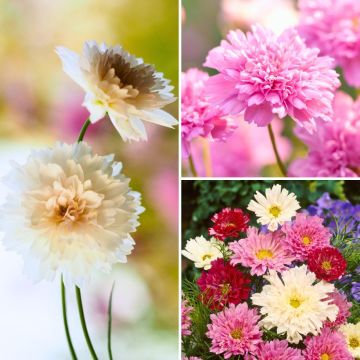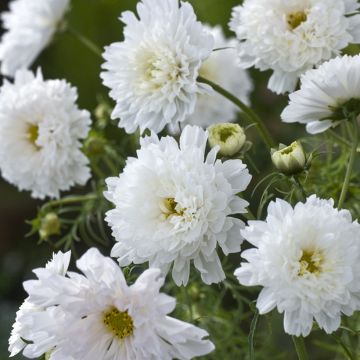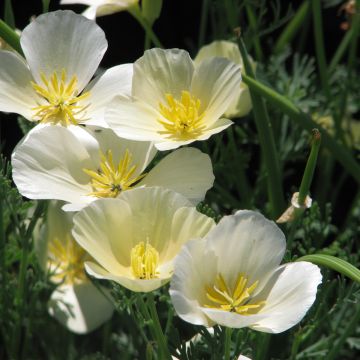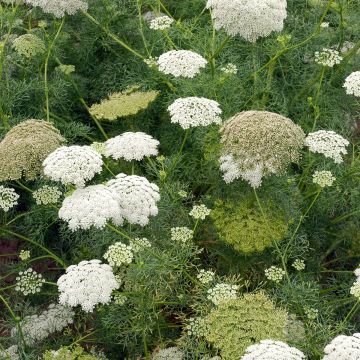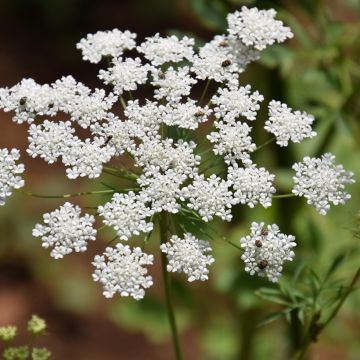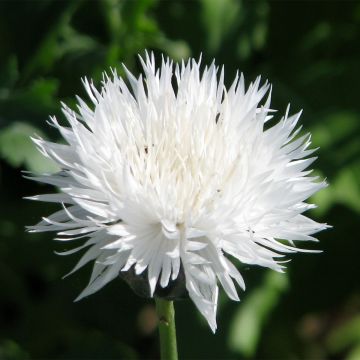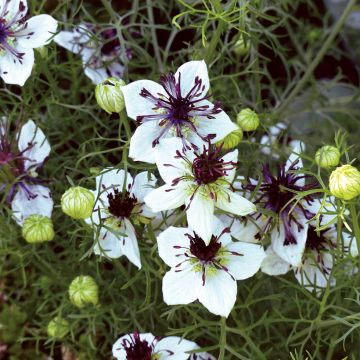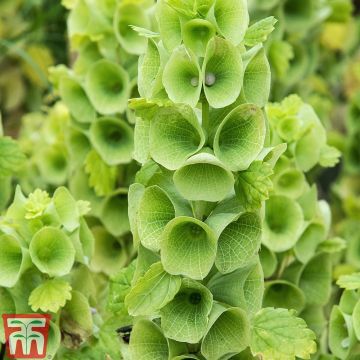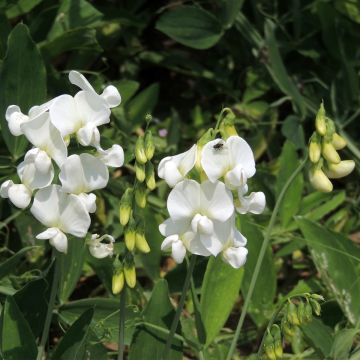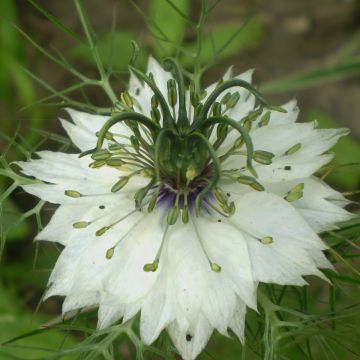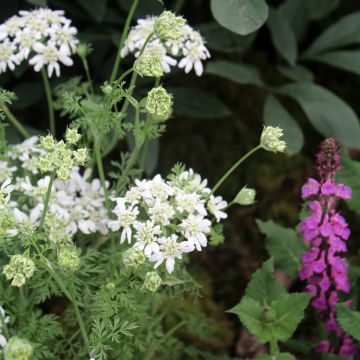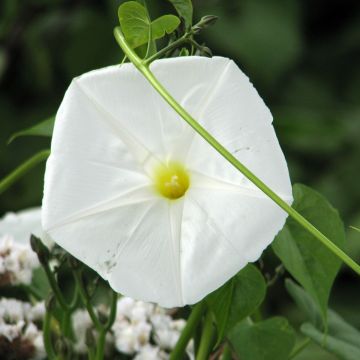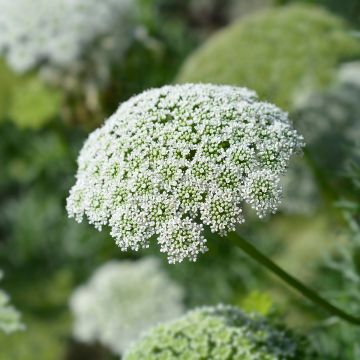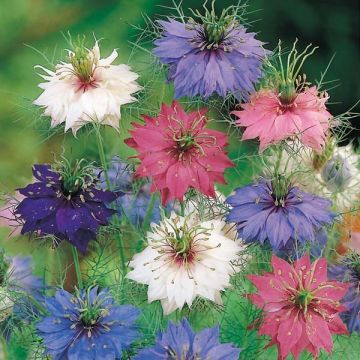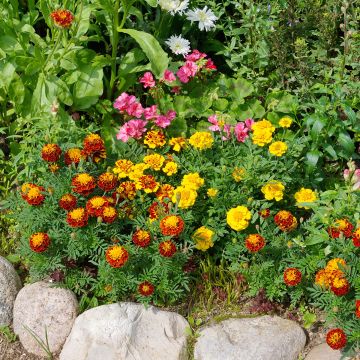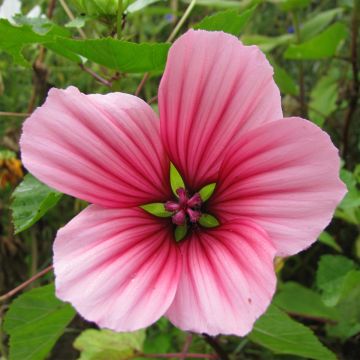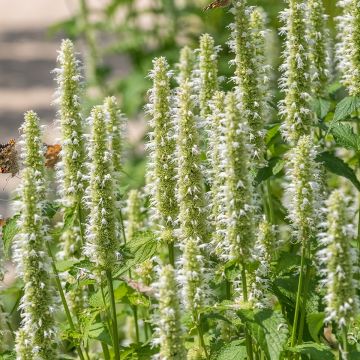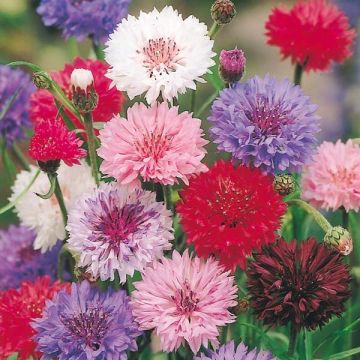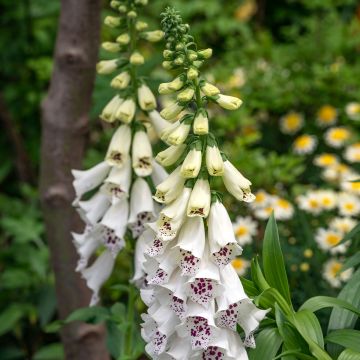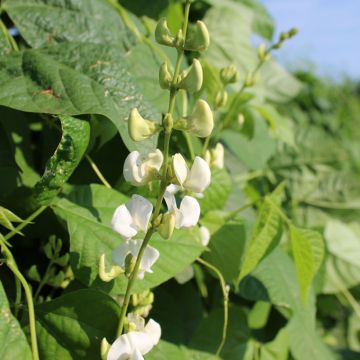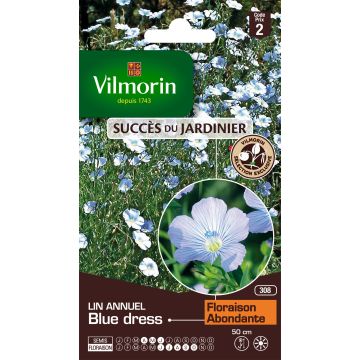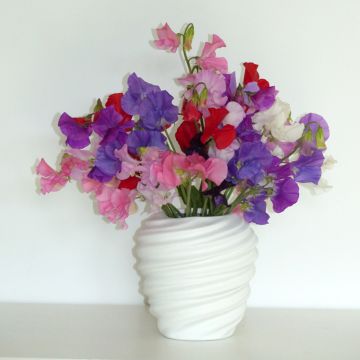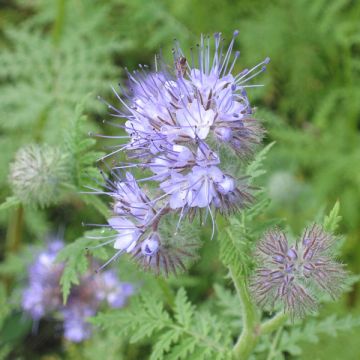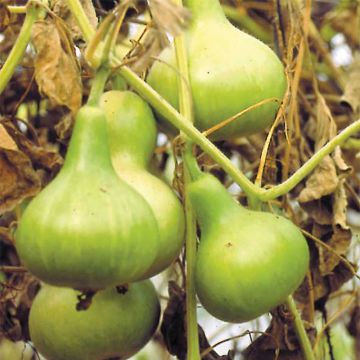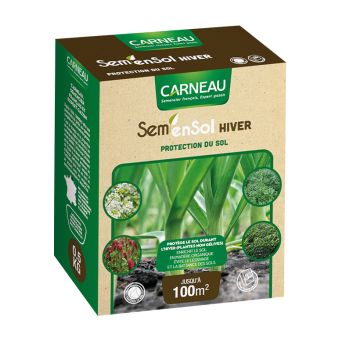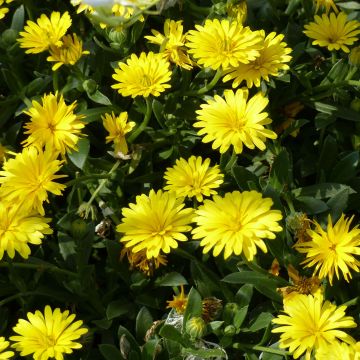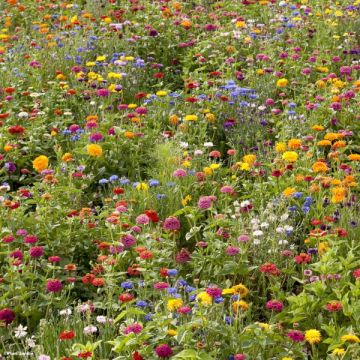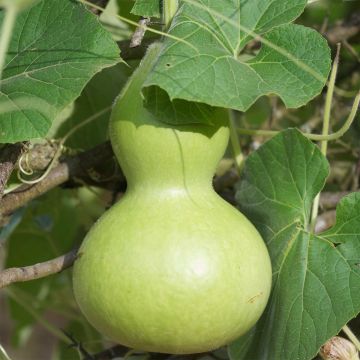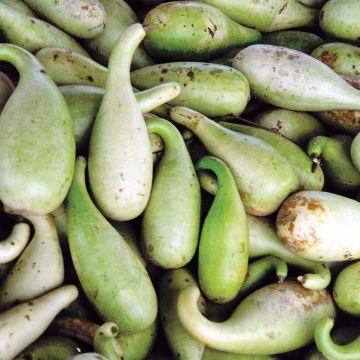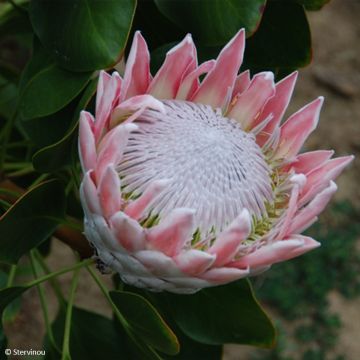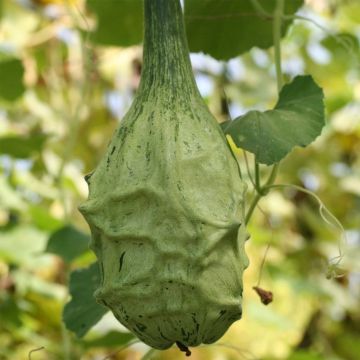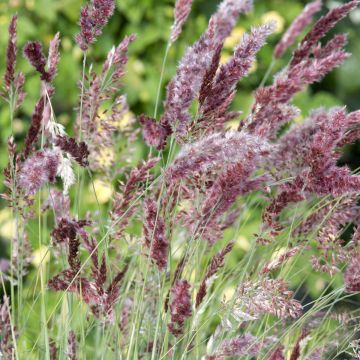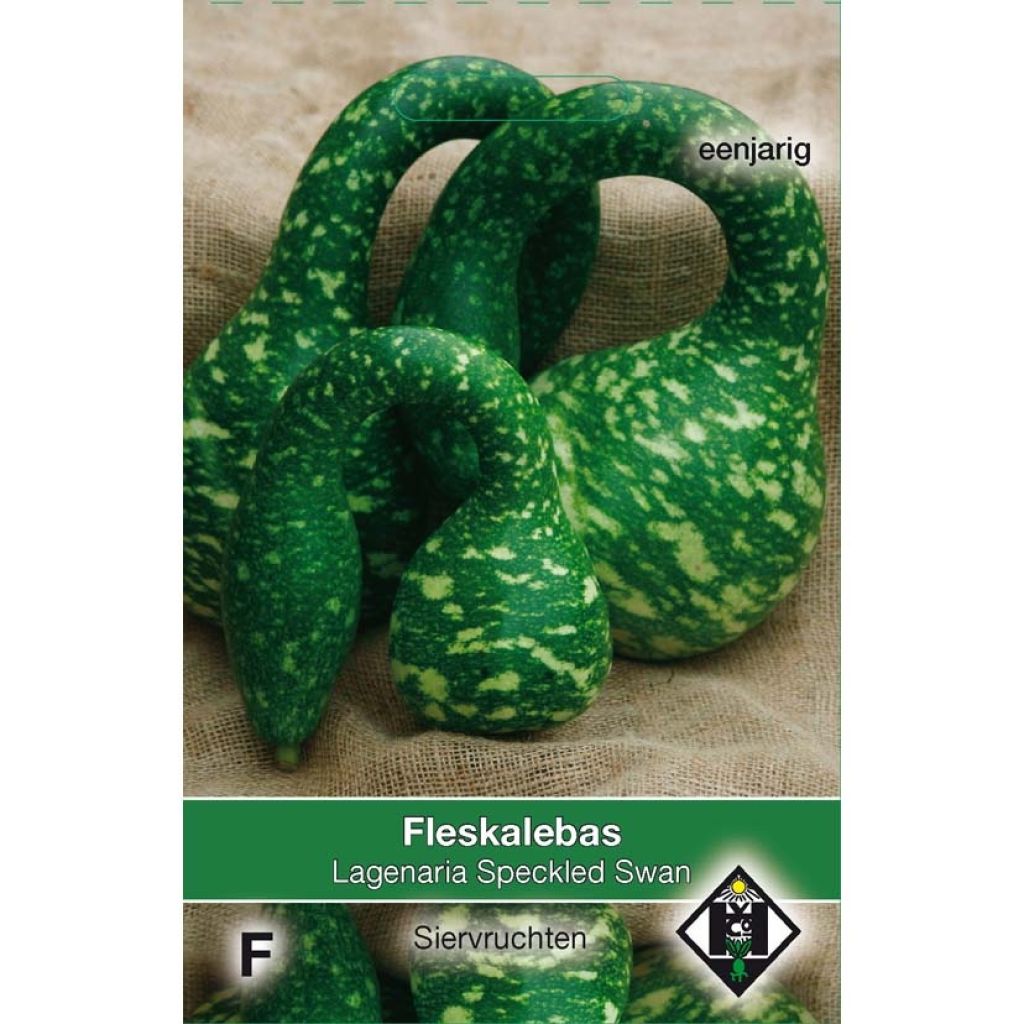

Bottle Gourd Speckled Swan - Cucurbita siceraria
Bottle Gourd Speckled Swan - Cucurbita siceraria
Cucurbita siceraria Speckled Swan
Bottle Gourd, Calabash, White-flowered Gourd, Wax Gourd, Long Melon.
Why not try an alternative variety in stock?
View all →This plant carries a 6 months recovery warranty
More information
We guarantee the quality of our plants for a full growing cycle, and will replace at our expense any plant that fails to recover under normal climatic and planting conditions.
Seed-only orders are dispatched by sealed envelope. The delivery charge for seed-only orders is €3.90.
Does this plant fit my garden?
Set up your Plantfit profile →
Description
The Gourd or 'Speckled Swan' Calabash is an astonishing variety of ornamental gourd, whose sowing is child's play. This cousin of our courgettes is a vigorous creeping or climbing plant with very fast growth, producing fruits with a swan neck, of beautiful dimensions, which sport a beautiful green robe speckled with white cream. It is undoubtedly an extraordinary cucurbit that can be used in floral compositions, table decorations, or to adorn the pergola. Its fruits are harvested from July to October-November, before the first frost.
'Speckled Swan' comes from a plant of the cucurbit family called Cucurbita or Lagenaria siceraria. This species of tropical annual plant has been domesticated and selected by humans for a long time, who use its fruits with a very hard and impermeable skin as containers. According to authors, its origins can be found in Africa, Thailand, or Peru. Creeping or climbing, this calabash develops ramified stems measuring up to 3 m (10ft) long in the space of one season, equipped with tendrils opposite the leaves, capable of clinging to any support within their reach. The green leaves, arranged alternately, are simple, rounded, hairy, and soft to the touch. Flowering takes place from July to September. It consists of distinct male and female flowers, white in color, funnel-shaped, which open at dusk. Only the female flowers produce fruits. The fruit is fleshy, with a spherical base, mini a thinner and curved protrusion ending in an elongated ball. The overall shape resembles that of a bird reaching a height of 60 cm (24in). The 'pulp' of the fruit dries out and lignifies at maturity, becoming as hard as wood. The shiny skin of this 'Speckled Swan' variety has an original and decorative pattern, randomly speckled with light on a dark green background.
Sow these gourds or calabashes in spring, in a heated shelter, as if they were vegetable plants. Then plant them in open ground or in flower pots. Their unusual fruits allow you to create all kinds of original decorations. They bring a touch of exoticism and fantasy to a large fruit bowl, mixed with grape clusters, apples, pears, grapevine leaves, mini pumpkins, and many more. Simply associate them with Chinese lanterns (Physalis franchetti) and small gourds in a bowl placed on the table. You can also let them climb on a pergola or arbor, surprising your visitors! The dried fruits can be stored for many years. Depending on personal preferences, it is perfectly possible to paint, wax, or varnish them. Offer the emptied fruit to birds: perhaps they will make their nest in it!
Report an error about the product description
Flowering
Foliage
Plant habit
Botanical data
Cucurbita
siceraria
Speckled Swan
Cucurbitaceae
Bottle Gourd, Calabash, White-flowered Gourd, Wax Gourd, Long Melon.
Cultivar or hybrid
Other Flower seeds A to Z
Planting and care
Sow gourd calabash seeds from March to May in 7 cm (3in) pots. Use good quality soil, possibly enriched with compost. Sow 2 or 3 seeds in each hole, at a depth of 1 cm (0in). Cover the seeds, lightly press down and water generously with a fine rain. Place your pots in a well-lit area, without direct sunlight, at a temperature of 20°C (68°F).
The seeds will germinate in 7 to 10 days. As soon as the plants reach a height of 20cm (8in), start gradually acclimatizing them to a temperature of 15°C (59°F).
By the end of May or early June, the temperature in the garden will be warm enough to plant your young plants. Choose a sunny location and sheltered from the wind. Add a good handful of compost to each planting hole, as these plants are very demanding. Space the plants 1 meter (3 feet) apart. Don't forget to install a support for them to climb on.
Throughout their growth, make sure they have enough water and nutrients.
Sowing period
Intended location
This item has not been reviewed yet - be the first to leave a review about it.
Flower seeds
Haven't found what you were looking for?
Hardiness is the lowest winter temperature a plant can endure without suffering serious damage or even dying. However, hardiness is affected by location (a sheltered area, such as a patio), protection (winter cover) and soil type (hardiness is improved by well-drained soil).

Photo Sharing Terms & Conditions
In order to encourage gardeners to interact and share their experiences, Promesse de fleurs offers various media enabling content to be uploaded onto its Site - in particular via the ‘Photo sharing’ module.
The User agrees to refrain from:
- Posting any content that is illegal, prejudicial, insulting, racist, inciteful to hatred, revisionist, contrary to public decency, that infringes on privacy or on the privacy rights of third parties, in particular the publicity rights of persons and goods, intellectual property rights, or the right to privacy.
- Submitting content on behalf of a third party;
- Impersonate the identity of a third party and/or publish any personal information about a third party;
In general, the User undertakes to refrain from any unethical behaviour.
All Content (in particular text, comments, files, images, photos, videos, creative works, etc.), which may be subject to property or intellectual property rights, image or other private rights, shall remain the property of the User, subject to the limited rights granted by the terms of the licence granted by Promesse de fleurs as stated below. Users are at liberty to publish or not to publish such Content on the Site, notably via the ‘Photo Sharing’ facility, and accept that this Content shall be made public and freely accessible, notably on the Internet.
Users further acknowledge, undertake to have ,and guarantee that they hold all necessary rights and permissions to publish such material on the Site, in particular with regard to the legislation in force pertaining to any privacy, property, intellectual property, image, or contractual rights, or rights of any other nature. By publishing such Content on the Site, Users acknowledge accepting full liability as publishers of the Content within the meaning of the law, and grant Promesse de fleurs, free of charge, an inclusive, worldwide licence for the said Content for the entire duration of its publication, including all reproduction, representation, up/downloading, displaying, performing, transmission, and storage rights.
Users also grant permission for their name to be linked to the Content and accept that this link may not always be made available.
By engaging in posting material, Users consent to their Content becoming automatically accessible on the Internet, in particular on other sites and/or blogs and/or web pages of the Promesse de fleurs site, including in particular social pages and the Promesse de fleurs catalogue.
Users may secure the removal of entrusted content free of charge by issuing a simple request via our contact form.
The flowering period indicated on our website applies to countries and regions located in USDA zone 8 (France, the United Kingdom, Ireland, the Netherlands, etc.)
It will vary according to where you live:
- In zones 9 to 10 (Italy, Spain, Greece, etc.), flowering will occur about 2 to 4 weeks earlier.
- In zones 6 to 7 (Germany, Poland, Slovenia, and lower mountainous regions), flowering will be delayed by 2 to 3 weeks.
- In zone 5 (Central Europe, Scandinavia), blooming will be delayed by 3 to 5 weeks.
In temperate climates, pruning of spring-flowering shrubs (forsythia, spireas, etc.) should be done just after flowering.
Pruning of summer-flowering shrubs (Indian Lilac, Perovskia, etc.) can be done in winter or spring.
In cold regions as well as with frost-sensitive plants, avoid pruning too early when severe frosts may still occur.
The planting period indicated on our website applies to countries and regions located in USDA zone 8 (France, United Kingdom, Ireland, Netherlands).
It will vary according to where you live:
- In Mediterranean zones (Marseille, Madrid, Milan, etc.), autumn and winter are the best planting periods.
- In continental zones (Strasbourg, Munich, Vienna, etc.), delay planting by 2 to 3 weeks in spring and bring it forward by 2 to 4 weeks in autumn.
- In mountainous regions (the Alps, Pyrenees, Carpathians, etc.), it is best to plant in late spring (May-June) or late summer (August-September).
The harvesting period indicated on our website applies to countries and regions in USDA zone 8 (France, England, Ireland, the Netherlands).
In colder areas (Scandinavia, Poland, Austria...) fruit and vegetable harvests are likely to be delayed by 3-4 weeks.
In warmer areas (Italy, Spain, Greece, etc.), harvesting will probably take place earlier, depending on weather conditions.
The sowing periods indicated on our website apply to countries and regions within USDA Zone 8 (France, UK, Ireland, Netherlands).
In colder areas (Scandinavia, Poland, Austria...), delay any outdoor sowing by 3-4 weeks, or sow under glass.
In warmer climes (Italy, Spain, Greece, etc.), bring outdoor sowing forward by a few weeks.

































